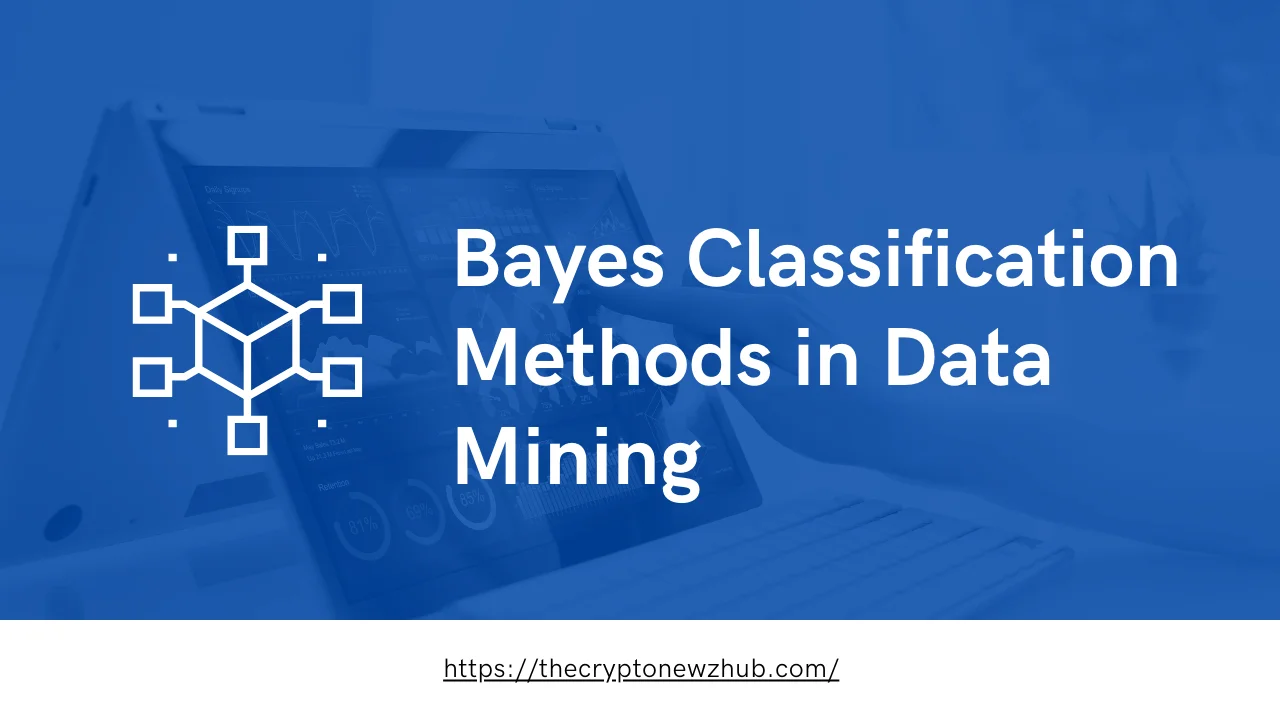Data mining makes heavy use of Bayesian classification methods, which are a powerful and basic statistical approach. In order to make very accurate predictions and decisions, these methods use Bayes’ Theorem. Bayesian classifiers offer a solid foundation for handling complicated classification problems by incorporating previous knowledge of aspects that may impact the happening of an event. The versatility of these tools makes them extremely useful in various fields, such as medical diagnostics, email filtering, and more.
Understanding Bayesian Classification and Its Applications
There is more than one model within the larger field of Bayesian classification; these models aim to address various issues with data analysis. An essential part of these approaches is the capacity to use historical data to determine the probability that a given data point falls into a specific category. Compared to models that solely take into account the observed attributes, those that are able to integrate prior knowledge with observed data are able to make more accurate predictions.
Predictive Modeling with Bayes’ Theorem
One important use of Bayesian classification is predictive modeling, which makes use of past data to foretell what’s to come. These models use Bayes’ Theorem to refine their predictions in response to fresh data, allowing them to become more accurate with time. When data patterns and relationships are constantly changing, this adaptive capability really shines.
Bayesian Pattern Recognition
By discovering and categorizing data patterns from a learned dataset, Bayesian classifiers shine in the field of pattern recognition. Whether it’s text, images, or even more complicated structures, these models can handle it all. Applications like handwriting recognition and picture classification benefit from their pattern recognition abilities.
Decision Making with Bayesian Methods
In situations where decisions must be made while facing uncertainty, Bayesian classifiers perform exceptionally well. Making informed decisions with incomplete or ambiguous data is made easier with these methods, which quantify uncertainty and calculate probabilities. Industries such as healthcare rely heavily on this capability because of the frequent need to make decisions under pressure and with limited information.
Adaptive Bayesian Algorithms
Because of their adaptability, Bayesian algorithms can dynamically update their parameters in response to fresh data. Anomaly detection in network security and financial market monitoring are two examples of real-time data processing applications that greatly benefit from this feature.
Bayesian Networks in Data Mining
One more sophisticated form of Bayesian model that can depict interdependencies among numerous variables is the Bayesian network, also called a Bayesian belief network. Data mining applications make extensive use of these networks to better understand the relationships between data points, which in turn allows for more precise predictions and deeper insights.
Benefits of Bayesian Classification in Predictive Analytics
Because of their statistical rigor and ability to incorporate prior knowledge, Bayesian classification methods provide significant benefits in predictive analytics. We take a look at the main reasons why these methods are so popular in data mining here.
Handling Uncertainty Effectively
Bayesian methods excel at dealing with uncertainty because of their inherent strength. This is accomplished by utilizing probabilities to convey output uncertainties; this gives a transparent gauge of confidence in the model’s predictions.
Superior Performance with Small Datasets
No matter how little data you have, Bayesian classifiers will still do an excellent job. This helps researchers and analysts get the most out of limited datasets, which is especially helpful in cases where collecting data is costly or otherwise challenging.
Flexibility in Model Updating
Bayesian classifiers are very flexible because they can adjust their parameters and assumptions based on new data. Fields like digital marketing and adaptive learning environments, which are constantly evolving, require this kind of adaptability.
Robustness to Missing Data
When dealing with incomplete real-world datasets, the robustness of Bayesian methods in handling missing data becomes apparent. This resilience lessens the impact of missing data bias and strengthens the analysis’s reliability.
Efficiency in Computational Resources
Numerous Bayesian classification algorithms are computationally efficient, which allows them to be applied on large-scale datasets despite their complexity. The modern age of big data makes this efficiency all the more important, since processing massive amounts of data rapidly is often necessary.
Advanced Applications of Bayesian Classification
Bayesian classification methods are finding more and more uses in more complex and niche areas of data mining as the discipline develops further. These examples show how Bayesian methods can be applied to different data analysis problems, showcasing their depth and versatility.
Bayesian Approaches to Spam Filtering
A well-known example of a Naive Bayes classification application is spam filtering. Adapting to new types of spam as they emerge, Bayesian classifiers efficiently filter out unwanted emails by analyzing their content and learning from patterns of known spam and non-spam messages.
Sentiment Analysis Using Naive Bayes
For example, Bayesian classifiers work wonders in sentiment analysis. These models go through text data like social media posts and customer reviews and figure out if the words are positive, negative, or neutral. They are perfect for this application because of their capacity to handle massive amounts of textual data.
Disease Diagnosis with Bayesian Classifiers
By searching through patient records for patterns that match specific medical issues, Bayesian classifiers help doctors make accurate diagnoses. These models are incredibly useful for medical diagnostics because they can take into account a wide variety of complex variables, such as symptoms, test results, and genetic information.
Bayesian Methods for Trend Detection
Another use case for Bayesian classifiers is the detection of trends in big datasets, like shifts in the market or changes in customer behavior. These models can aid researchers and businesses in spotting new trends faster by constantly revising their predictions in light of fresh data.
Challenges and Limitations of Bayesian Classification
Despite their effectiveness, Bayesian classification methods do have some limitations and difficulties. If practitioners have a good grasp of these, they will be better able to apply the models and foresee potential problems.
Computational Complexity in Large Networks
Computational demands can escalate for Bayesian networks, particularly when dealing with numerous variables and interdependencies. In large-scale applications, this complexity can cause processing power demands to rise and analysis speeds to degrade.
Sensitivity to Prior Knowledge
Bayesian classifiers are very sensitive to the precision and quality of the input data used to train them. Incorrect assumptions or biases in the prior data can lead to misleading results, which is particularly problematic in critical applications like medical diagnosis.
Independence Assumption of Naive Bayes
Although it is rarely the case in actual data, the Naive Bayes classifier operates under the assumption that all features are independent. If the data is complicated and the variables are interdependent, the model may not perform as well due to this simplification.
Data Preprocessing Requirements
In order to make sure the data is suitable for the Bayesian classification model, a lot of data preprocessing is usually necessary. Data transformation, handling missing data, and outlier removal are all examples of tasks that fall into this category; all of them can be laborious and delicate to handle properly to prevent distorted data.
Addressing Real-Time Data Processing
One of the main obstacles to using Bayesian classification methods for real-time data processing is making sure the models can accurately and rapidly update with new data. This is absolutely essential for applications such as real-time risk assessment or online fraud detection.
FAQs
Q1: What is Bayes’ Theorem used for in data mining?
A1: Bayes’ Theorem is used to calculate the probability of an event based on prior knowledge of conditions that might be related to the event, helping in predictive modeling and decision-making.
Q2: Why is Naive Bayes called ‘naive’?
A2: It’s called ‘naive’ because it assumes that all predictors (features) are independent of each other, a simplification that is generally not true in real data.
Q3: Can Bayesian classifiers handle missing data?
A3: Yes, Bayesian classifiers can handle missing data more robustly than many other statistical methods, which allows them to perform well even with incomplete datasets.
Q4: Are Bayesian methods suitable for large datasets?
A4: Yes, Bayesian methods are computationally efficient and can be scaled to handle large datasets, although the complexity can increase with the size of the network.
Q5: What makes Bayesian classifiers adaptive?
A5: Bayesian classifiers can dynamically update their parameters in response to new data, which makes them adaptive and capable of improving their accuracy over time as more data becomes available.
Also Read: Hyperledger vs Ethereum: Key Differences and Comparison
Conclusion
Finally, data miners can take advantage of a robust and flexible toolbox for data analysis and prediction with Bayesian classification methods. The Bayesian approach is an indispensable tool for data scientists because it offers clarity, adaptability, and accuracy regardless of the complexity of the dataset.

Brandy Stewart, an enchanting wordsmith and seasoned blogger, weaves compelling narratives that transport readers to uncharted territories. Infused with perceptive viewpoints and dynamic storytelling, Doris exhibits a command of language that enthralls both hearts and minds, leaving a lasting mark on the literary panorama.

